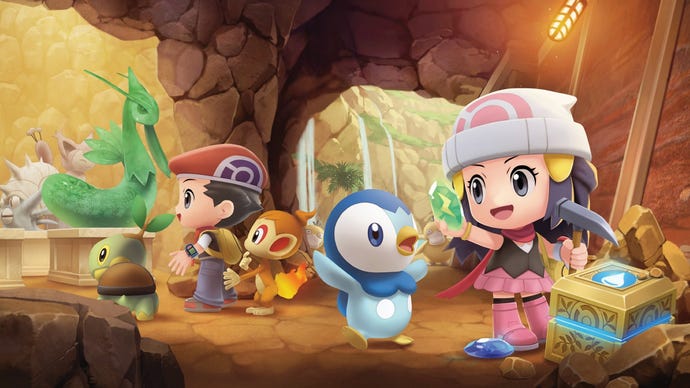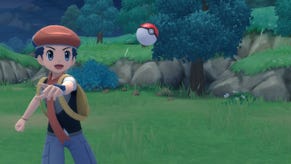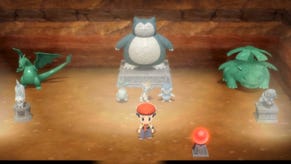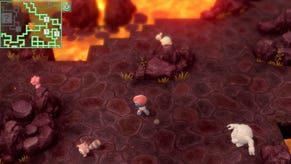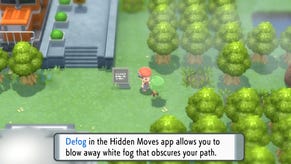Pokemon Brilliant Diamond and Shining Pearl are faithful, basic remakes - for better and worse
The latest pair of Pokemon Remakes are perhaps the most faithful do-overs in the series yet, keeping things simple and changing little.
Over the last few years, Pokemon has taken a few interesting detours. We’ve seen the series experiment with getting rid of the traditional gym battle structure, with open-world design, and famously with jettisoning some older Pokemon from the current playable Pokedex. Some of these changes fans have loved, some they’ve understood, and some they’ve criticized. The latest small adjustment to series traditions comes in its newest pair of remakes - which are a little different to those we’ve had in the past.
The concept behind Pokemon remakes, as established by the first couple back in 2004, is to modernize older Pokemon titles up to the standards of the ‘current’ generation. So FireRed and LeafGreen shared a visual look and feature set with the GBA-era Pokemon games, while HeartGold and SoulSilver did the same for the DS era. Pokemon Brilliant Diamond and Shining Pearl break with that tradition, to an extent. Rather than being new versions of Diamond and Pearl that are designed to match up to the style and presentation of Pokemon Sword & Shield, it’s a more workmanlike, simplistic remake. It is the same game with a handsome new coat of paint.
That glow-up won’t be for everyone. The chibi style of characters on the overworld is somewhat reminiscent of the dreamy toy-like style of the Switch remake of The Legend of Zelda: Link’s Awakening, which not everybody loved. But I do think it fits, and it’s a wonderful representation of how the vaguely chubby, stubby sprites used back on the Nintendo DS might look if rendered relatively faithfully using modern 3D graphics. When you slip into battle, the game swaps art styles to a more contemporary Pokemon look that essentially resembles the anime. This might sound potentially jarring, but it isn’t - Japanese RPGs have been utilizing different art styles for battles and the overworld for a long time, and what is good enough for Final Fantasy 7 is certainly good enough for Pokemon.
Look beyond the visuals and what you’ll find is… very much a 2006 Pokemon game. I’d say that Diamond and Pearl are arguably the last of the early, most staunchly traditional Pokemon games. If the first three generations loosely form a trilogy, at least in design terms, this fourth generation acts as something of a coda. The next generation is where the series began to mix things up more and more, which years later would culminate in the series-shaking Sword and Shield and next year’s Legends: Arceus.
The fact this is a more traditional Pokemon game is actually great at this time - it offers a lovely counterpoint to the direction the rest of the series is travelling in, especially with the most different Pokemon ever on the horizon in the new year. It’s a chance to take a victory lap of that basic, arguably timeless structure of a young kid heading out into an RPG world to travel from town to town to tackle their gyms with few other distractions - apart from a criminal team, anyway. Pokemon is more mechanically rich now, but BDSP offers a glimpse at the series when it was just a little more innocent and simple.
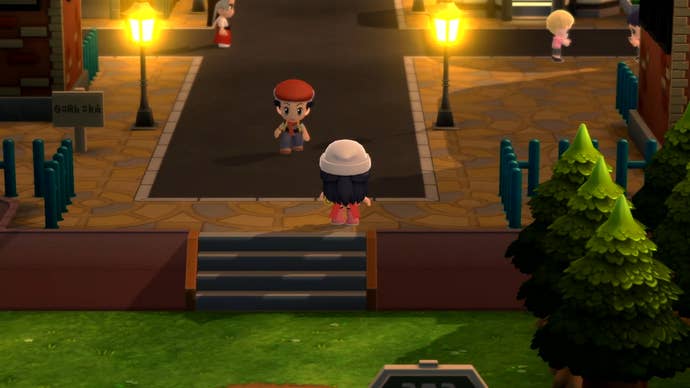
That fact makes this remake work, though it is extremely workmanlike, as I said. I haven’t yet reached the post-game where there are more additions, which is why these are impressions rather than a scored review, but it’s sort of astonishing how faithful it is. Let me give you a very simple early-game example. In Diamond and Pearl, the player character starts off painfully slow, but then is eventually gifted the Running Shoes. This happens about ten minutes into the game, but that first short stint is painfully slow. You’re moving like molasses - and the acquisition of the shoes isn’t tied to any major story event where moving it would cause a problem.
If I were in charge of this remake, I’d have just made the protagonist speedy from the get-go as a quality of life change. People can handle their little chibi doll-like protagonist moving at more than a snail’s pace, I reckon. But here, it is exactly as it was. That was how the original game was, and so too is this. It doesn’t matter that later games gave you the shoes from the start, understanding how painful the slow movement was; this is a faithful remake, to a fault.
That also makes this a fairly difficult game to write about, especially in a not-yet-review written before I’ve fully explored the post-game content, which also happens to be the area where BDSP features the most additions. I mean, how much did you like Pokemon Diamond and Pearl? If this was one of your favourite Pokemon generations, or even your outright favourite, you now have a lovely, 3D visual version of these games, painstakingly recreated for the Nintendo Switch.
On the topic of the quality of this 3D recreation, there’s been a lot of fuss about the music and certain visual aspects - all I can say is that in the finished game, patched to version 1.1.0, these things appear to be largely fine. This is a game that seemingly has come in quite hot - but the finished product doesn’t seem broken in any way. If you agree with all of its aesthetic choices is, of course, another question.
.jpg?width=690&quality=70&format=jpg&auto=webp)
I also get why some fans are going to feel short-changed by this release, though. For one, if this is your most-loved generation that you’ve been looking forward to a remake of, it might be a bummer to ‘only’ get a faithful recreation rather than see the Sinnoh region of Diamond and Pearl recreated with the fidelity of Sword and Shield. Furthermore, one of the biggest appealing points of the Pokemon remakes is the ability to take newer Pokemon into an old region - and this isn’t possible here. Not even newer evolutions of Pokemon available in the game (like, say, Sylveon or Mr. Rime) are available - and again, this differs from past remakes, which would begin to open things up as you got deeper in.
In many ways, Brilliant Diamond and Shining Pearl feel like a belt-and-braces development. It’s clear to me that the title Game Freak wanted to make is Pokemon Legends: Arceus, which is due out in just a couple of months. BDSP feels almost like an obligation, co-developed with an external company that’s new to the franchise; a Sinnoh remake created in the most simple form possible because, well, fans expected a Sinnoh remake.
Taken as that - as a stop-gap on the way to Arceus, as a way to tread water until the newer, shinier, more exciting game - it’s alright. Generally speaking, I don’t think it’s quite as rich and exciting as previous Pokemon remakes, though - but everything that made the original Diamond and Pearl beloved is thoroughly intact.
